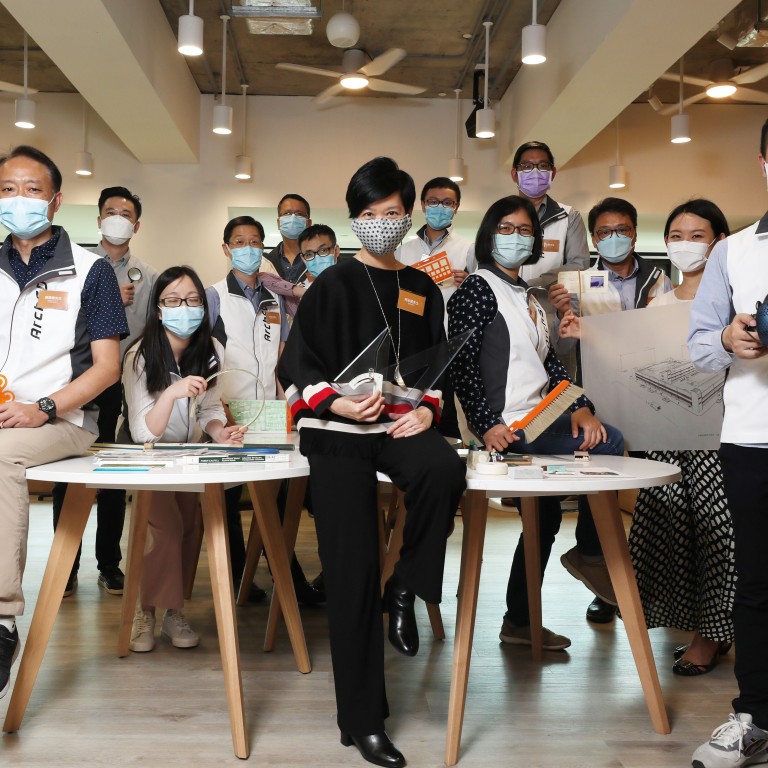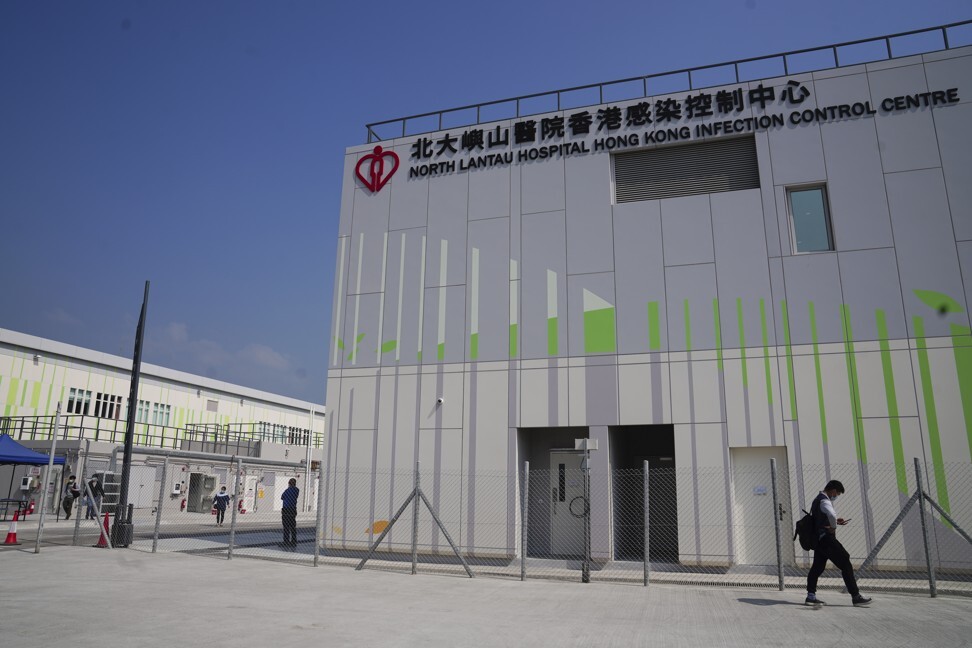
Coronavirus: How Hong Kong opened a new hospital in record time to strengthen the city’s pandemic fight
- Opening just months after construction started, the North Lantau Hospital Hong Kong Infection Control Centre provides 816 isolation beds for Covid-19 patients
- ‘The time pressure was something that I had never experienced’, says architect leading the project
The colossal task of designing and building a temporary hospital in record time to care for Hong Kong’s Covid-19 patients was one of the most challenging projects government architect Winnie Ho Wing-yin had undertaken.
Rapid progress was only possible through harnessing new design software and communications technology, said Ho, director of the Architectural Services Department.
Temporary Covid-19 hospital on Hong Kong’s Lantau Island set to open
“We only had a very short amount of time for what was a great emergency. We had to provide the facilities as soon as possible to help Hong Kong, so every day counted. The time pressure was something that I had never experienced,” she said in a recent interview.
Even the quickest architectural projects that she typically encountered took at least a year to complete, she added.
The six-ward facility was constructed between September 2020 and January this year under a fast-track process to provide relief to hospitals squeezed by the rising number of coronavirus cases. It opened its doors on February 26.
It can provide patients with oxygen supply and antiviral medication, but is designed for people exhibiting relatively mild symptoms. Those suffering a deterioration in their condition can be moved to the city’s major hospitals.

The technology that Ho’s team has been using to build Covid-19 facilities is cutting-edge software using Building Information Modelling (BIM), which offers digital visualisation of construction data which 2D drawings cannot provide.
Producing 3D renditions of architectural projects, the programmes go beyond construction drawings to show how the buildings will function when complete.
The software also enables the team to share layouts and other information to a higher level of detail with factories in mainland China, offering more accuracy to allow the project to reduce on-site construction waste.
“Without the 3D drawings, without these communication tools, the construction team can’t decide what to manufacture in the factories on mainland China. The factories are waiting for decisions every day,” she added.

The BIM technology has also been used to design brighter facilities that are more aesthetically pleasing.
Ho also led the design of Penny’s Bay Quarantine Centre, the city’s biggest such facility with 3,500 rooms.
“We will try to put in graphics and colours so when people live in the camps, at least when they look around, it’s not just grey or white, but there are some cheerful colours,” she said.
Hong Kong needs to up mass quarantine game, expert says; four new Covid-19 cases confirmed
Still, adapting to the different software was initially challenging for many members of staff.
“Every time new technology comes, there is concern, a lack of confidence, an anxiety to use and pick up new skills,” said Ho, who added employees were offered incentives and motivation to make the learning process more enjoyable and satisfying.
“It’s a mindset change, it’s the attitude, it’s the innovative spirit that we need to promote in the department.”

